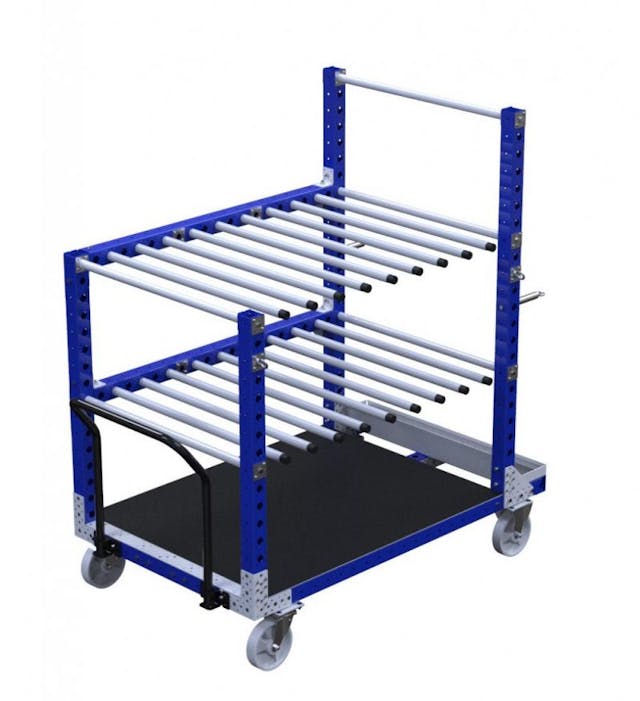What are the main differences between Lean Manufacturing & Six Sigma?

When looking at your manufacturing processes and methods to make them more efficient, two methods/processes always come to the top, Lean Manufacturing & Six Sigma. Lean Manufacturing was created with the aim to phase out waste and developing a more efficient production flow in the manufacturing process. While Six Sigma was developed as a set of techniques and tools for process improvement. Both methods seem to have their loyal followers and because of this, it can make it difficult to determine which is best for your manufacturing processes. It is also argued that incorporating methods and strategies from both Lean Manufacturing & Six Sigma is the best approach to improving your material flow.
We will give you a summary of both processes and allow you to determine which would be best for your goals in your manufacturing process whether it’s Lean Manufacturing, Six Sigma or a combination of them both.
Lean Manufacturing
Lean manufacturing is an organized approach to waste minimization with a manufacturing process. However, the goal of waste minimization also aims to ensure no productivity or efficiency is lost when reducing waste. Lean manufacturing has been around for a long time and was used within Henry Ford’s first manufacturing facilities, as he always aimed towards having extremely high manufacturing standards so each step of the process flowed into the next. This ideal was then popularized by Toyota with the development of the “Toyota Production System”. This production system went on to become one of the most efficient production methods in the world and is what garnered attention from western countries.
Lean focuses on 7 areas in your manufacturing process where you will find waste:
- Waiting: People & Parts waiting for the next step in the process.
- Motion: Movement of people & equipment
- Transport: Movement of parts & products
- Defects: Efforts caused by rework and scrap.
- Inventory: Parts waiting to be processed.
- Over Production: Production that is more than needed, or before it is needed.
- Over Processing: More work or higher quality than is required from the customer.
When you begin to remove waste from each of the above 7 areas, your overall manufacturing process will become more successful. Lean is a popular approach to eliminating sections of your process which don’t provide value and therefore create a more efficient process. But how does this compare to Six Sigma?
Six Sigma
Six Sigma also strives towards reducing waste within manufacturing environments. However, it defines waste as anything that doesn’t meet the customer’s expectations. Its main focus is to eliminate anything that deviates from the customer experience. Six Sigma comes from statistics and from this, it is said that within a Six Sigma organization there are only 3.4 defects per million opportunities (DPMO). In other words, 99.99966% of all opportunities are free of defects, statically speaking. However, a three-sigma organization would have 66,807 DPMO and 93.3% of all opportunities free of defects. Below you can see a table to see the DPMO and yield for each Sigma:
| Sigma | DPMO | Yield |
| Two Sigma | 308,537 | 69.1% |
| Three Sigma | 66,807 | 93.3% |
| Four Sigma | 6,210 | 99.37% |
| Five Sigma | 233 | 99.976% |
| Six Sigma | 3.4 | 99.9996% |
While both Lean Manufacturing & Six Sigma aim to improve processes, Six Sigma does this by using Define, Measure Analysis, Improvement & Control (DMAIC) phases.
- Define: Define the problem
- Measure: Quantify the problem
- Analyze: Identify the cause of the problem
- Improve: Implement & Verify the solution.
- Control: Maintain the solution.
Both methods have the same goal, in the end, they both want to eliminate waste and create more efficient manufacturing processes. Each method just takes a separate approach on how to best reach this goal. It seems each method just defines what the actual cause of the waste is differently. Lean manufacturing believes that waste is created by unnecessary steps in the manufacturing & production processes. While Six Sigma claims that waste is produced from variations within the process.
It is up to you to determine which method would best match your production methods and the organizational goals you have. Determining where in each process you may be creating waste is key and we have found that much waste is created within the “Transport” phase of the Lean Manufacturing phases. This is why at FlexQube we highlight our flexible and heavy-duty material handling concept. Our material handling carts can be modified to match our materials and parts and help to eliminate waste within your Transport phase.
Contact us today to learn more about how our heavy-duty & highly flexible material handling concept can help you eliminate waste.



